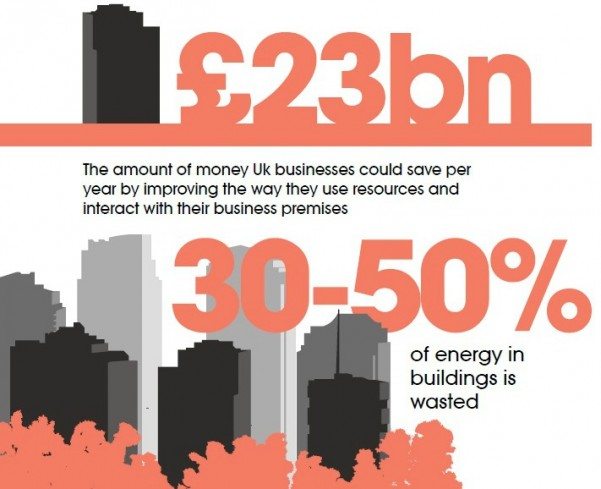The cost of smart technology is dropping, while the cost of waste and energy in increasing.
This has opened up a space where energy and waste management becomes ever more effective and creates commercial opportunities for those entrepreneurial companies agile enough to take advantage of this rapidly growing field.
The principle of “you can’t manage what you can’t measure” is vital to improve the way buildings are managed and to unlock savings, whether in terms of cash, carbon or waste.
However, gathering the data is only the first step to evidence-based decision-making.
Technology developers and end users are becoming increasingly aware of the challenge of effectively extracting intelligence from the high volume of data being produced.
According to wired.com, “Data in the 21st Century is like Oil in the 18th Century: an immensely, untapped valuable asset. Like oil, for those who see Data’s fundamental value and learn to extract and use it there will be huge rewards.”
 Oil, however, just like data, needs to be processed and refined before it can be used.
Oil, however, just like data, needs to be processed and refined before it can be used.
Nike’s Hannah Jones, vice president of sustainable business and innovation, explains, “There’s a lot of talk about how much we need data, but actually we need the right data, and we use some serious analytics behind it to turn it into value creation.”
The Savortex model starts with savings but progresses to incorporate resource efficiency through remote management. Finally we add value to the client by sharing the monetisation of the data.
Savortex’s view is that sustainable products will only be able to make a significant impact if they go beyond simple savings, as compelling as those may be.
Smart products need to improve resource efficiency and, as Hannah Jones mentions, create value for the building owner.
To effectively manage energy and waste, pinpoint source monitoring is required. Inevitably this requires large numbers of devices and multiple device types such as lights, hand dryers, HVAC systems, water metering, and fire alarm systems.
Together these generate high volumes of data. Simply producing a smart device is only half the product. The means of delivering the full added value to the client is the way that success will be measured.
Clients, however, do not have the time to log into multiple portals or download separate sets of data and reports in order to make decisions. The devices have to be interoperable so that a single view is presented to the client.
The data has to dynamically show everything from utility and service expenditures to maintenance requirements, all in relation to patterns of building use and occupancy.
A holistic picture of the interaction of the building and its users, needs to be understood to minimise resource use within the building.
Ultimately buildings, not just the devices in the buildings, will become smart enough to adapt to occupancy patterns, leaving facility managers to concentrate on the bigger picture and allow the building to manage the routine operations.
Originally published in The Manufacturer



